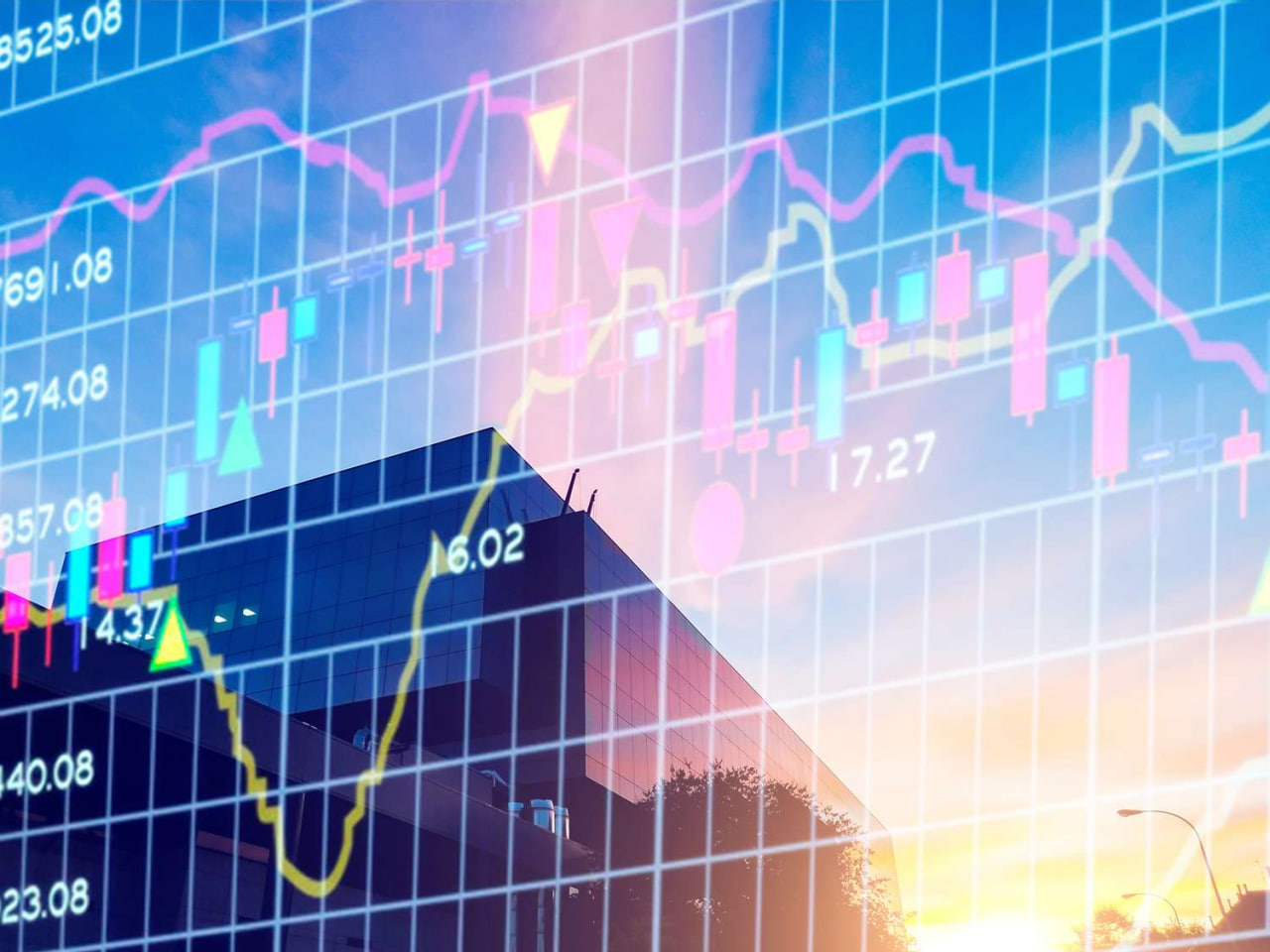Global Market Update: Gold Soars, Policy Shifts Shake Things Up
Meta Description: Gold prices hit record highs, impacting global markets. This in-depth analysis covers recent market trends, key policy changes in China, US budget deficits, and the performance of major indices and companies, providing insights for investors. #GoldPrices #GlobalMarkets #ChinaPolicy #USBudget #StockMarket
Wow, what a week for the global markets! Hold onto your hats, because we're diving deep into the latest financial news, exploring the rollercoaster ride of gold prices, the seismic shifts in Chinese policy, the ever-growing US budget deficit, and the ripple effects felt across major indices and individual companies. This isn’t your grandpappy's market recap; we're going beyond the headlines, analyzing the underlying currents and providing actionable insights for savvy investors. We'll dissect the implications of the recent policy changes, exploring the potential opportunities and risks they present. Get ready for a comprehensive overview that's both informative and engaging – because understanding the market shouldn't be a chore, it should be an adventure! We'll explore the details behind the record-breaking gold prices, examine the impact of China's capital market reforms, and delve into the implications of America's ballooning debt. So buckle up and let's navigate this exciting world of finance together! This isn't just a report; it's a journey into the heart of global market dynamics, filled with expert analysis and a touch of human insight. We'll unravel the complexities, making sense of the numbers and trends so you can make informed decisions. We're talking real-world implications, practical strategies, and a dash of market wisdom gleaned from years of experience. Prepare to be informed, engaged, and empowered!
Gold Prices Surge: A Record-Breaking Rally
Last week saw gold prices reach unprecedented heights, with both spot gold and COMEX gold futures hitting new record highs. Spot gold saw a 1.07% increase, closing at $2721.49 per ounce, marking a 2.44% weekly gain. Similarly, COMEX gold futures climbed 1.08%, ending the week at $2736.8 per ounce, a 2.28% weekly surge. This dramatic rise signifies a significant shift in market sentiment, potentially driven by various factors including inflation fears, global economic uncertainty, and safe-haven demand. This isn't just a blip on the radar; it’s a powerful indicator of underlying market anxieties. The implications are far-reaching, impacting everything from investment strategies to consumer confidence. Let's examine the potential drivers behind this golden rush!
What's fueling this gold rush? Several factors are at play. Firstly, persistent inflation worries are pushing investors towards safe-haven assets like gold. The fear of a global recession is another significant contributor, leading investors to seek the stability that gold traditionally provides during periods of market turmoil. The weakening dollar also plays a role, as a weaker dollar typically makes gold more attractive to international buyers. In short, it's a perfect storm of factors driving up the price of gold.
China's Capital Market Reforms: A Catalyst for Growth?
The China Securities Regulatory Commission (CSRC) recently held a significant meeting focused on deepening capital market reforms. CSRC Chairman Wu Qing met with experts, academics, and financial media representatives to discuss ways to invigorate the market and bolster investor confidence. The discussions highlighted the need to maintain the current positive momentum and utilize reforms to stimulate growth. Key suggestions included enhancing the market's adaptability and inclusivity, improving regulatory efficiency, and streamlining the process for high-quality tech companies to go public. Moreover, there's a focus on balancing reforms on both the financing and investment sides, aiming for a more sustainable and resilient market. This is a big deal, folks! China's capital market is a significant player on the global stage, and these reforms could have far-reaching consequences.
The proposed reforms aim to address several key challenges. One major area is improving accessibility for technology companies seeking IPOs. The CSRC is pushing to simplify and streamline the listing process, making it easier for promising tech firms to access capital. Another area of focus is cultivating long-term investment, promoting “patient capital” instead of short-term gains. This shift in focus signifies a move towards sustainable and responsible investment practices. The emphasis on investor education is also crucial, ensuring that investors understand the risks and rewards involved in the market. It's a multifaceted approach designed to strengthen and stabilize the market for the long haul.
The implementation of the Securities, Fund, and Insurance Company Swap Facility (SFISF) is another significant development. With an initial operating capacity of 500 trillion yuan, this instrument aims to provide liquidity to financial institutions. The details of the operation, including the determination of swap rates and collateral management, have been carefully outlined. This shows a proactive approach to managing liquidity within the financial system. The government is pulling out all the stops to ensure market stability and confidence.
US Budget Deficit: A Looming Shadow
The US budget deficit for fiscal year 2024 hit its third-highest level in history, reaching a staggering $1.83 trillion. This dramatic increase is primarily attributed to rising debt interest costs, soaring social security and defense spending, and a relatively slower growth in tax revenues. This presents a significant long-term challenge for the US economy, potentially impacting interest rates, inflation, and global financial stability. The implications are far-reaching, affecting every aspect of the US economy and beyond.
This isn't just a matter of numbers; it reflects fundamental issues in US fiscal policy. The increasing reliance on borrowing to fund government spending is unsustainable in the long run. The consequences of this massive debt burden could include higher inflation, reduced economic growth, and increased vulnerability to global economic shocks. It's a ticking time bomb that needs careful and immediate attention.
Global Market Index Performance: A Mixed Bag
While gold prices soared, the performance of major global indices was more mixed. The Nasdaq Composite rose 0.63% for the week, totaling 0.8% weekly gain, while the S&P 500 gained 0.4%, with a weekly gain of 0.85%. The Dow Jones Industrial Average had a more modest increase of 0.09% for the week, totaling a 0.96% weekly gain. Large-cap tech stocks showed a mixed performance, with Intel gaining over 1%, while Microsoft, Google, Amazon, and Nvidia saw more modest gains. Tesla and Meta, however, experienced slight declines.
The performance of Chinese stocks listed in the US (China ADRs) was generally positive, with the Nasdaq Golden Dragon China Index climbing 3.03%. Li Auto saw a significant surge exceeding 6%, and other major players like Futu Holdings, Bilibili, Weibo, and NetEase also experienced substantial gains. The Hong Kong stock market also performed strongly, with the Hang Seng Index rising 3.61%, the Tech Index increasing 5.77%, and the China Enterprises Index climbing 4.07%. Sectors like semiconductors, securities, insurance, and real estate showed significant upward trends. This reflects a mixed but generally positive sentiment amidst the ongoing global economic uncertainty.
Company News: A Snapshot of Corporate Performance
Several companies reported their financial results for the third quarter, providing insights into their performance and overall market trends. Here's a snapshot of key highlights:
| Company | Key Highlights |
|------------------------------|-------------------------------------------------------------|
| Sinopec Engineering Group | New contracts worth ¥734.57 billion, a 65.6% year-on-year increase. |
| Huaneng Power International | Electricity generation up 1.14% year-on-year. |
| Zijin Mining | Gold and copper production increased significantly. |
| Country Garden Holdings | Contract sales declined significantly year-on-year. |
| Kingdee International Software | Cloud subscription revenue up about 23% year-on-year. |
| Jiumaojiu | Same-store sales declined across its restaurant brands. |
| Shanghai Fudan University | Significant drop in net profit compared to the previous year. |
| Nayuki | Opened 23 more stores. |
| China Galaxy Securities | Approved to participate in the SFISF program. |
| Zhejiang Expressway | Received approval for Zhongshen Securities to participate in SFISF.|
| CICC | Received approval to participate in the SFISF program. |
| Citic Securities | Approved to participate in the SFISF program. |
| Huatai Securities | Approved to participate in the SFISF program. |
| COSCO SHIPPING Development | Plans share buyback with support from Bank of China. |
| Sinotrans | Received loan from CMB China for share buyback. |
| Sinopec | Received loan from Bank of China for share buyback. |
| Sinopec | Received loan from Bank of China for A-share repurchase. |
These reports highlight the diverse performance of companies across various sectors, reflecting the complex dynamics of the current market environment.
Frequently Asked Questions (FAQ)
Q1: What are the main factors driving the surge in gold prices?
A1: Several factors are contributing, including persistent inflation fears, global economic uncertainty, the search for safe-haven assets, and a weaker US dollar.
Q2: How will China's capital market reforms impact global markets?
A2: The reforms could significantly impact global markets by boosting China's economic growth, attracting foreign investment, and altering global capital flows.
Q3: What are the potential consequences of the growing US budget deficit?
A3: A large and growing deficit could lead to higher interest rates, increased inflation, slower economic growth, and increased vulnerability to global economic shocks.
Q4: How did the major stock market indices perform last week?
A4: The performance was mixed. US indices like the Nasdaq and S&P 500 saw modest gains, while the Dow had a smaller increase. Hong Kong indices performed strongly.
Q5: What are the implications of the SFISF program in China?
A5: The SFISF aims to improve liquidity in the financial system. It's a significant policy tool designed to mitigate systemic risk and support financial stability.
Q6: What key insights can be gleaned from the company performance reports?
A6: The reports showcase a diverse range of corporate performances, highlighting the varied impacts of the current economic climate on different sectors. Some companies showed strong growth while others faced challenges.
Conclusion
In conclusion, the past week has been a whirlwind of activity in global markets. The record-breaking gold prices, significant policy shifts in China, the growing US budget deficit, and the mixed performance of major indices all paint a complex picture of the current economic landscape. Staying informed and understanding these trends is crucial for making sound investment decisions. This detailed analysis provides a comprehensive overview of the key events and their potential implications. Remember the market is dynamic and unpredictable. Continuous learning and observation is key to navigate the financial world. Stay tuned for further updates as the market continues to evolve!



